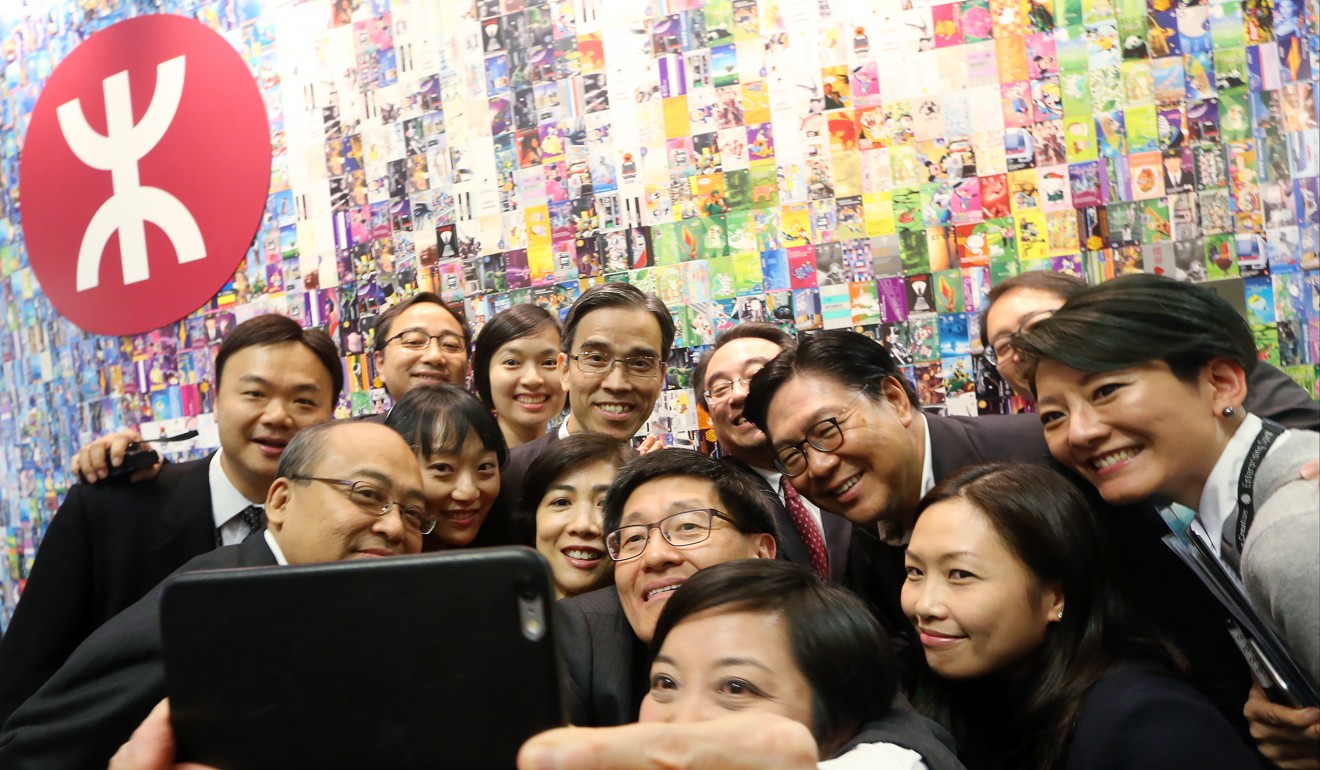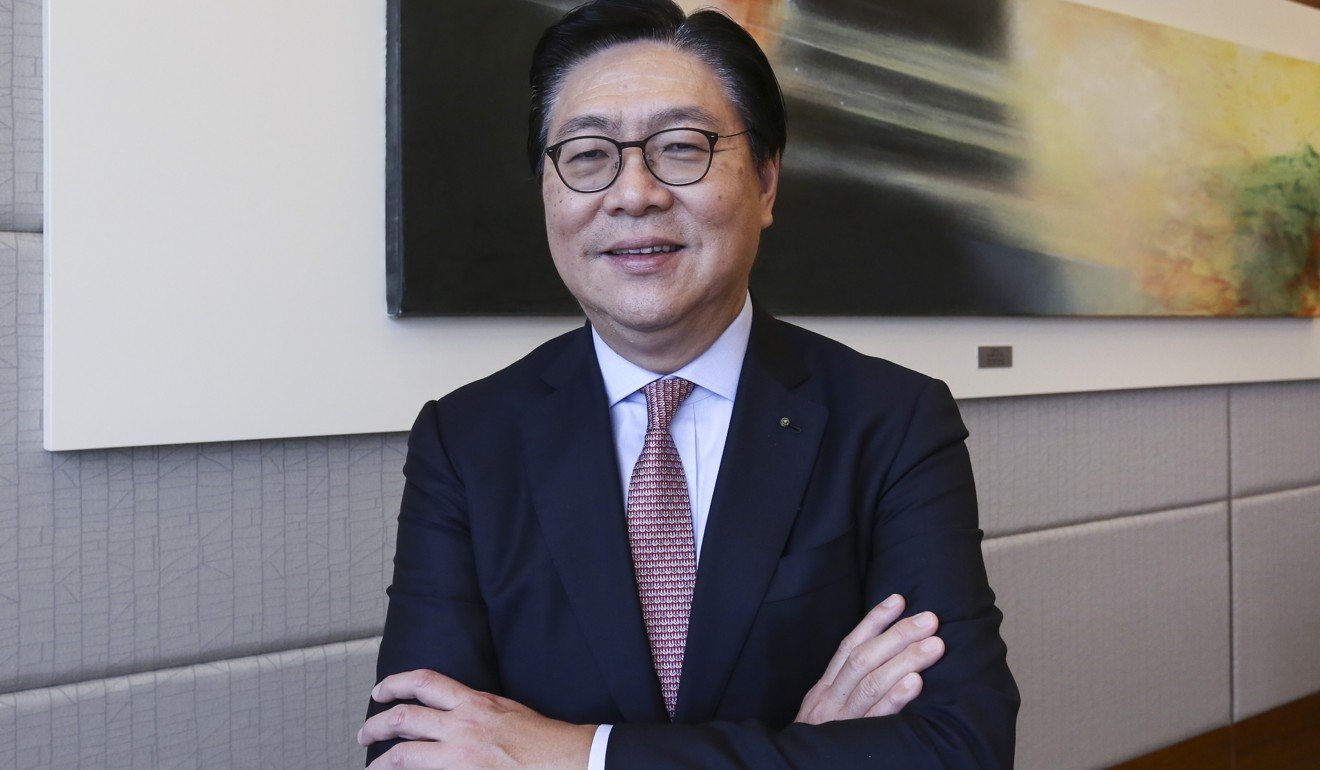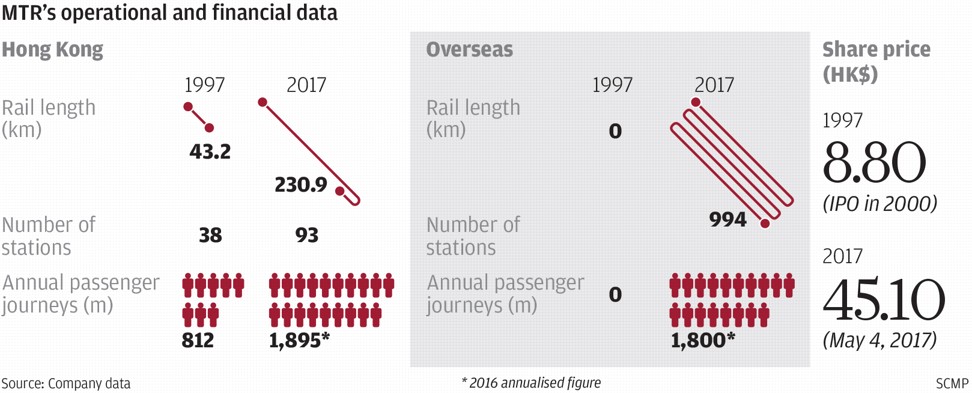
From local metro network to global rail giant: Hong Kong’s MTR sets its sights firmly overseas
The company’s ever-expanding international footprint, in many cases working as an underground operator for a fee, stretches from London and Stockholm to Melbourne and Sydney
MTR Corp, Hong Kong’s largest transportation stock, says international expansion and opportunities arising from China’s flagship regional infrastructure-building “Belt and Road Initiative” now form the core of its business plan.
Over the past 20 years, the organisation has grown substantially through listing and merger, says chairman Frederick Ma Si-hang.
“International expansion is the major business development for the MTR, a route we only started down in the past decade,” he said.
“In that time we have successfully exported our services and established a strong international reputation. We should be proud of MTR, as it is among the few local home-grown brands that can be successfully exported around the world,” he said in an exclusive interview with the South China Morning Post.
MTR currently has active projects in Britain and Sydney, but it’s along the Belt and Road – the modern day Silk Road land and sea trading routes – that offers abundant opportunities for its skills and experitse.
There are 65 countries involved in the economic blueprint created by China, and railway and road building projects are likely to dominate, as the modern-day trade routes are created.
For the average Hongkonger, the letters ‘MTR’ simply mean swift, efficient trains that speed them daily under the city’s packed streets on 11 separate rail lines.
What they might not be aware of, is the company’s ever-expanding international footprint, in many cases working as an underground operator for a fee, as in Beijing, Shenzhen and Hangzhou, and further afield in London, Melbourne, and Stockholm.
MTR now operates nearly 1,000 kilometres of track outside Hong Kong, not including the 455-km MTR Express in Sweden, which it operates with others.
It carried 1.8 billion overseas passengers last year, or 5.6 million daily, almost as many as the 1.9 billion it does at home in Hong Kong.
From solely a local rail operator in 1997, it has become a truly international transport giant with a 17,600-strong workforce in Hong Kong, and more than that – 20,000 staff – based in other countries around the globe.
“The key to overseas expansion is management. MTR traditionally has a very good management culture which is the foundation for us to go overseas.,” said Ma.
“We always hire local talent to run whatever local operations, wherever we go, In this way we can attract the very best staff, who understand the local culture and issues involved.”
The next stage in MTR’s overseas expansion starts in August when it takes over the franchise to operate the South Western rail franchise in Britain, working with a local joint venture partner.
The company’s lines connect London to cities and towns in the southwest of England – a total 970 km of track which carry some 230 million passengers.
In the UK capital, MTR is also the operator of Crossrail, which will be renamed the Elizabeth Line in honour of the country’s 90-year old Queen, when a new tunnel section through central London opens at the end of next year.

“It was under British colonial control when Hong Kong started building the MTR in 1975, and it seems ironic now that the company is expanding, by operating some of the British railway,” he said.
Another overseas project is the new Sydney metro, where MTR has taken a major investment and will operate the network when it starts in 2019.
Hong Kong’s first underground rail line opened in 1979, and by the time of the handover in 1997 it stretched 43 km and carried 812 million passengers a year.
Twenty years on, that network is four times the size, at 230 km spread across 11 lines, which carries 1.9 billion passengers in 2016.
Ma says the company really came of age in 2000, when it listed on the stock market, which instantly gave the organisation more transparency as well as spending power.
Its other most significant milestone came seven years later with the HK$12 billion merger with government Kowloon-Canton Railway Corp (KCRC), in December 2007.
“[Until then] MTR was only responsible for the metro, while KCRC ran a railway. The merger combined their networks to allow MTR to be the sole railway operation in the city,” he said.
It also eliminated the need for both to compete for projects, combined their resources and helped enhance station management, said Ma.

At home, Ma’s sights are also set on building a high-speed rail link from Hong Kong to various mainland cities – a project that has started, but has hit the buffers slightly on how to handle the cross-border checking point arrangements.
“The benefits and importance of having a high-speed train linking Hong Kong with many major mainland cities could be huge. It would mean being able to travel from here to Shanghai within hours.
“It would be so important for the future of Hong Kong’s development and its integration with the mainland,” he said.
Besides rail, MTR has also become a hugely successful domestic property developer, which it now plans to expand overseas.
A good example of what might follow is “Tiara”, a property development with 1,700 residential units, being built above the depot of the Shenzhen-Longhua Line, which the MTR operates.
The company’s first property project outside Hong Kong, the first units will be handed over to buyers at the end of last year.
“It is a perfect model. Financially, it has allowed MTR to become one of the few railway companies worldwide that does not need any government subsidies,” he said.
“Passengers can also pay cheaper fares, because of the revenue we generate from property sales.”
“Many passengers have to walk a long way home. But the MTR model allows many of its passengers to leave the trains, enter a shopping centre, office or their own homes, built right above the stations,” he said.
“Around the world, we are seeing huge waves of urbanisation... and MTR will be able capture many such opportunities in the years ahead.”



